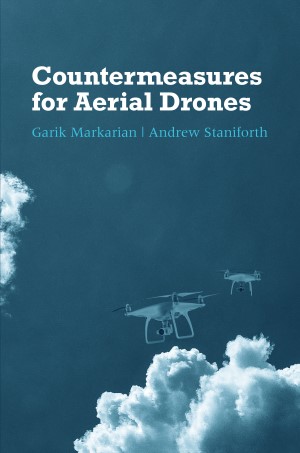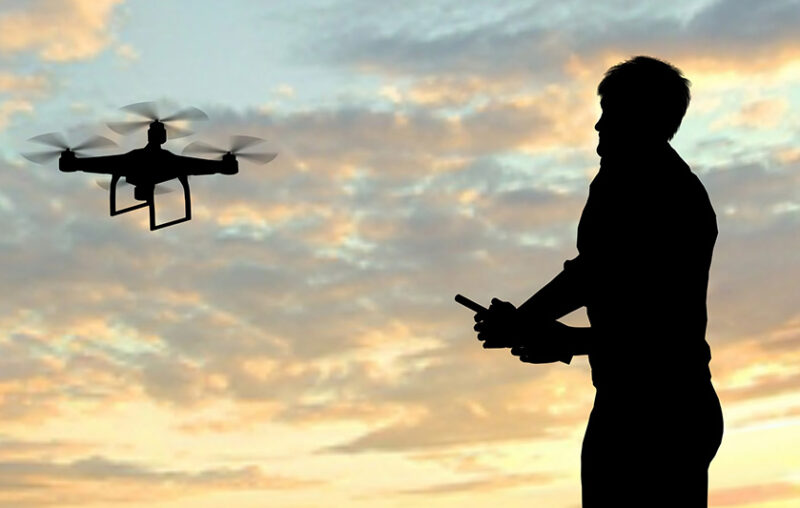Unmanned aerial vehicles (UAVs) have been commercially available for decades, but until lately, the unique challenges of operating aircraft remotely has meant that there have been relatively few users of such systems outside of specialist military operators and skilled model aircraft pilots.
Advances in key technologies now mean that in recent years remotely piloted aircraft have become increasingly available, increasingly capable, and increasingly easy to use.
Major incidents involving the malicious use of drones have highlighted that tackling hostile drone threats is a real challenge. Governments across the world continue to seek ways to reduce the likelihood of such incidents.
The proliferation of the commercial use of drones has created a new, innovative and exciting addition to the aviation industry with boundless possibilities. Inevitably, this technology comes with risks.
Careless and inconsiderate drone users can cause a nuisance and pose a safety risk to others. Ignorance is not an excuse, but the reckless use of drones raises concerns for citizens’ privacy and public safety.
There are also those who more deliberately use drones for criminal acts, whether that is to facilitate organised crime, disrupt national infrastructure, or commit acts of terrorism. Major incidents involving the malicious use of drones have highlighted that tackling hostile drone threats is a real challenge.
Governments across the world continue to seek ways to reduce the likelihood of such incidents, as well as amplifying their ability to respond should further incidents occur.
Counter-drone solutions
It is now evident that the scale of the challenge in preventing rogue drone incursions and malevolent attacks is much wider than any one government department. There is clear international consensus that there is no technological silver bullet suitable for use against all drones under all circumstances, and as drone technology advances, the nature of the threat will change.
Tackling malicious drone use now requires a comprehensive and layered strategic approach to be put in place by government and implemented across the full local, regional and national apparatus of the state.
Tackling malicious drone use now requires a comprehensive and layered strategic approach to be put in place by government and implemented across the full local, regional and national apparatus of the state. This strategic approach must blend technological innovation with legislation, regulation and education.
Developing counter-drone solutions will not solely reside in one nation, it is a global phenomenon requiring greater collaboration, including the sharing of knowledge, expertise and best practices.
It is also a problem that cannot be solved by authorities alone; at-risk sectors within private industry must now increasingly consider their vulnerability to malicious drone use, and how they should best mitigate it safely and legally. Technological countermeasures will need to co-evolve with drones, and within the legal and regulatory frameworks that govern their use.
Threat vectors
Some governments have recognised the scale of threat vectors from contemporary drones, developing a comprehensive understanding of the evolving risks posed by their malicious and illegal use.
This recognition is now turning into positive state action, taking a ‘full spectrum’ approach to deter, detect and disrupt the misuse of drones, which acknowledges the need to build strong relationships with industry to ensure their products and services meet the highest security standards.
Lessons from the police use of drones during the pandemic reinforced the need for public dialogue about the police and wider proliferation of drone use in society, addressing the privacy and surveillance concerns of citizens fundamental rights.
Moreover, as demonstrated during the global COVID-19 pandemic, governments are empowering their police and other operational responders to enforce the law through access to counter-drone capabilities and legislation.
Lessons from the police use of drones during the pandemic reinforced the need for public dialogue about the police and wider proliferation of drone use in society, addressing the privacy and surveillance concerns of citizens fundamental rights.
Governments need to strike a balance between ensuring a robust security posture is in operation to keep citizens and their economy safe, while recognising the benefits of the legal uses of drones and allow themselves to reap the fullest rewards of incorporating drone technology into society that is accepting of the sudden changes.
Best practice
The best defence against the hostile use of drones is to employ a hierarchy of measures to counter the threat which encompasses regulatory, passive and active counter measures. Regulatory countermeasures can restrict the capabilities of commercially available drones and limit the ability of hostile groups and individuals to procure and fly drones.
The combination of these countermeasures, augmented by a counter-drone strategy as an integral component of broader security operations, serves to support the prevention and detection of rogue drone threats to public safety and national security.
Regulations to prevent the misuse of drones will reduce the threat, but the uncomfortable truth is that they will not be able to prevent them all, given the hostile intent and creative ambitions of rogue actors.
Despite the increasing introduction and regular review of existing regulations, security policymakers remain concerned that the rapid growth of the drone industry continues to outpace the development of rules and regulatory systems to govern their use, and by extension, the powers for police and other civil authorities to effectively enforce drone laws.
Regulations to prevent the misuse of drones will reduce the threat, but the uncomfortable truth is that they will not be able to prevent them all, given the hostile intent and creative ambitions of rogue actors who continue to seek new ways in which to adopt drone technology to progress their malicious operations.
The scale and scope of drone technological advancements, and the next generation of drones to be integrated with increasing levels of analytical computer power and artificial intelligence, ensures that the threat from drones will persist throughout 2021, remaining a major public safety and nation security concern for the foreseeable future.
Countermeasures for Aerial Drones – 30% discount for Policing Insight readers
Andrew Staniforth (regular Policing Insight contributor, author, and Director of Innovation at Saher (Europe) Ltd), and Garik Markarian (author, Chair and Head of the Department of Communications Systems at Lancaster University) have co-authored a new book on tackling the threat from drones – Countermeasures for Aerial Drones – and Policing Insight subscribers and registered users can get a 30% discount off the cover price.
 This comprehensive resource explains the development of unmanned aerial vehicles (UAVs), drone threats, counter-UAV systems, and strategies to handle UAVs, focusing on the practical aspects of these systems and technologies. Theory, technical and operational practice with insights from industry and policing are all covered, and the full rogue drone threat landscape and counter-drone technologies and systems are explored.
This comprehensive resource explains the development of unmanned aerial vehicles (UAVs), drone threats, counter-UAV systems, and strategies to handle UAVs, focusing on the practical aspects of these systems and technologies. Theory, technical and operational practice with insights from industry and policing are all covered, and the full rogue drone threat landscape and counter-drone technologies and systems are explored.
The book provides insight into developing effective counter-drone strategies and programmes, as well as the regulatory frameworks governing the use of drones. It includes analysis of future drone and counter-drone challenges, highlights ongoing research and innovation activities, and examines future drone technologies. Written by authors who have extensive academic, research, innovation, technical, industry and police operational investigative expertise at international level, this book is useful for the aviation sector, law enforcement and academia.
You can find out more about the book by visiting the publisher’s website (use this link if you are based in the US); to get 30% off the cover price, use the discount code PI30 when you check out.


